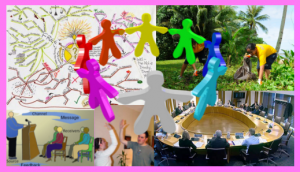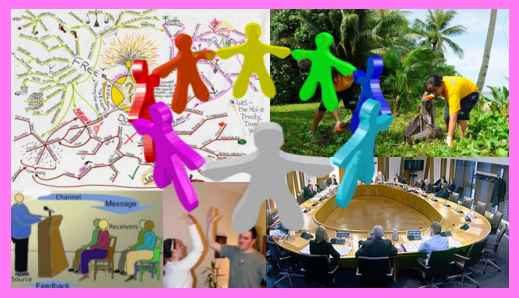

Community Mapping
- Students working in teams ask and answer questions about their community. See below.
Community Mapping Questions:
- What are the cultures in the community? How many different cultures exist? Describe them.
- What opportunities exist for learning and teaching?
- What are the local enterprises that promote economic growth?
- What are the local community organizations?
- What citizen actions are taking place around critical issues?
- What are the problem areas in the community such as noise, pollution, substandard housing, graffiti, erosion or trash?
- What local political issues impact the community?
- What local talents exist in the community?
- What are the local stories?
- Who are the most important people in the community?
- Who makes decisions?
- Who is the most respected, wisest, wealthiest, or most loved?
- How do these people connect to teaching and learning opportunities?
Interviewing Community Members Questions:
- What is important to them?
- What are their greatest needs?
- What environmental issues are important to them?
- Who are the important people involved in those environmental issues?
- What are the important relationships and partnerships?
- How would a person who wants to help with the issue get involved?
- What is missing in what we are doing?
Community Mapping Reflection Questions
- What patterns or unexpected relations between features or systems did you observe?
- What opportunities are there for teaching and learning?
- What opportunities and resources are there to learn more about the problem / issue?
- What opportunities and resources are there to find solutions to the problem?
- Who else do we need to include to make our work most beneficial to the community?
- How will you apply your new awareness of the problem upon returning to your program?

Involving students in mapping the community can expose varied and unexpected learning opportunities that can frame future projects. These ideas can be engaging to students because of their close relationships to their everyday lives outside of school. Student community mapping can be amplified by sets of well-designed questions aimed at getting students to dig deep and notice interesting patterns in their community. See above for examples.

Preparation Steps
- Decide when in the year you would like to involve students in community mapping. A good time might be at the start of the year. This could provide enough lead time to use discoveries from community mapping to frame future projects.
- Revise questions above to generate specific questions that will uncover learning opportunities in the community that relate to your content and to upcoming topics.
Early Implementation Steps
- Assign community mapping questions to students working in teams.
- Require students to interview 1 to 2 community members to gather more information. (primary research)
- Also require students to conduct secondary research to gain insight into some community mapping questions
- Have students present their findings and future project ideas and their importance and potential impact
Advanced Implementation Steps
- Invite local community members to the classroom to describe how they work and their impact on the community
- Use student discoveries to build new partnerships and to frame new projects that connect to community issues

- PBL articles
- Amping up the authenticity

